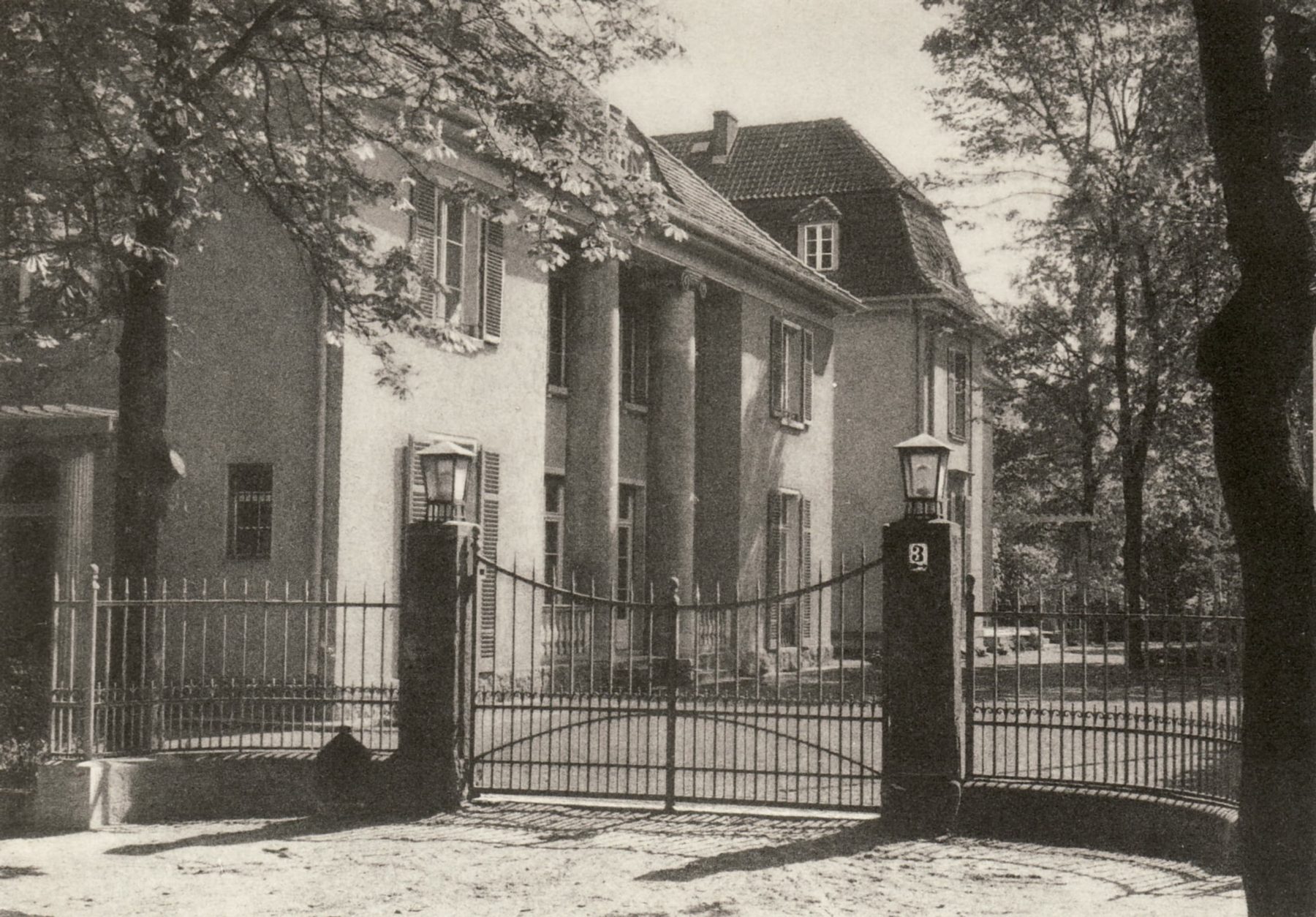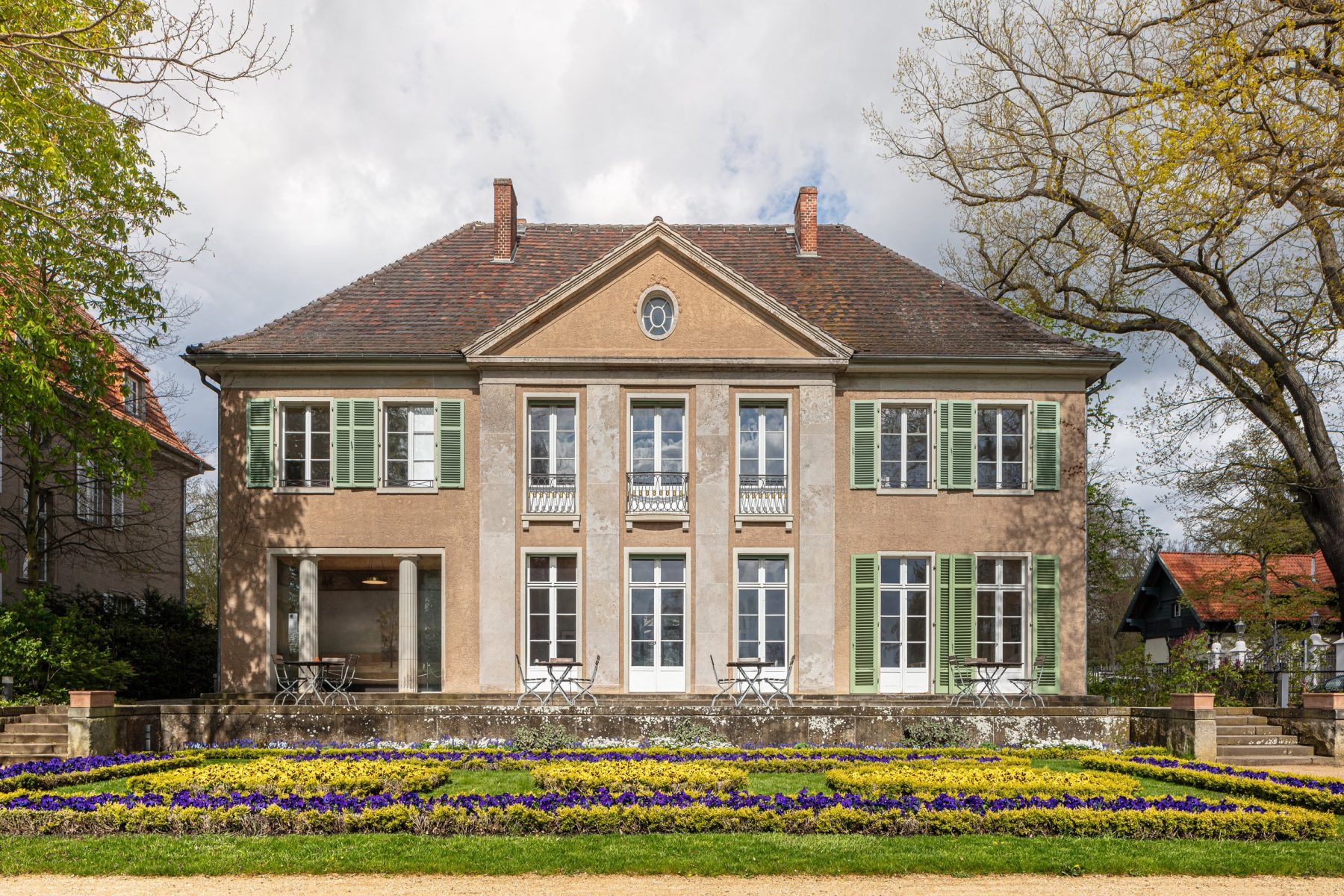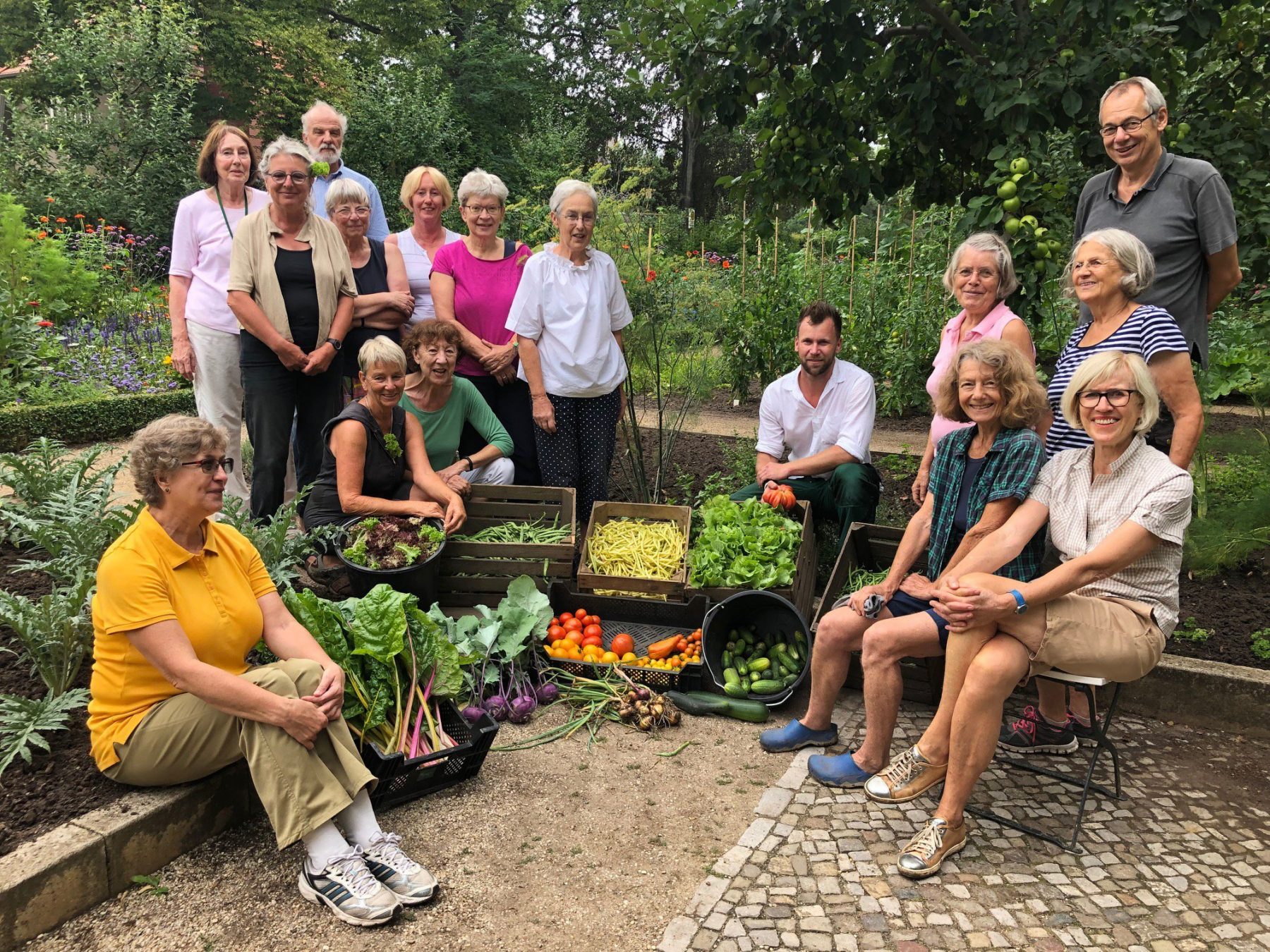
Villa & Garden
Around 1900, a trend for country houses became noticeable among Berlin’s upper middle classes. In July 1909, the painter Max Liebermann (1847-1935) acquired one of the last waterfront properties in the Alsen villa colony on Lake Wannsee – two plots of land at Große Seestraße 24 (today Colomierstraße 3). There he created a summer retreat for his family away from their main residence in the heart of Berlin.
Villa

Creation
“Yesterday I built all day and we are now pretty clear about the floor plans (I’ll bring the plans with me). Not however about the facade, which looks too much like a farmhouse: I want a country house built by a man of the city. As always, the simplest is the hardest.” – Letter from Max Liebermann to Alfred Lichtwark, 7/26/1909.
Max Liebermann’s letters attest to the detailed considerations that went into the design of the villa as well as the surrounding garden. In these designs the painter was supported by his friend Alfred Lichtwark (1852-1914), the garden reformer and then-director of the Hamburg Kunsthalle.

Architecture
The design of the villa – in the style of Hamburg classicism – was undertaken by the architect Paul Otto Baumgarten, a student of Alfred Messel. He had already designed the neighboring Villa Hamspohn in 1906. The villa was completed in the spring of 1910. Between 1910 and the painter’s death in 1935, the Liebermann family spent their summer months at Wannsee, as Liebermann fondly called it, their “castle by the lake.”

After 1935
The summer of 1934 was the last that the family spent at Wannsee. Max Liebermann died in the February of 1935. In the following years, the house was subject to a variety of uses: in 1940, Martha Liebermann was forced by the National Socialists to sell the property to the German Postal Service, which used it as a training camp for its female employees. After 1945, Liebermann’s villa, along with the neighboring Villa Hamspohn, became the surgical department of the Wannsee Hospital. In 1951, the Liebermann-Villa was restituted to Max and Martha’s daughter Käthe. She leased the house to the hospital. After Käthe’s death in 1952 the house was inherited by her daughter Maria, Liebermann’s only grandchild. She sold it to the state of Berlin in 1958. In 1969, the hospital moved to a newly built complex in Heckeshorn. After standing empty for two years, the city leased the villa to a diving club, the German Underwater Club in 1971. For over twenty years the villa served as the divers’ club house.

Reconstruction
The Max Liebermann Society was founded in 1995 with the aim of preserving Liebermann’s memory. It soon set its sights on establishing a Liebermann museum in the painter’s former summer home. Also in 1995 however, shortly after the founding of the society, the city agreed to prematurely extend the lease with the diving club for a further twenty years. After two years of struggle, in 1997 the Berlin senate agreed to allow the Villa to be used as museum, on the condition that no public money be provided for its upkeep.
In 2002 the Max Liebermann Society began the renovation of the villa and its conversion into a museum. The work was supported by many private individuals and institutions, including the members of the Max Liebermann Society, the Stiftung Deutsche Kassenlotterie, the Hermann Reemtsma Foundation and Weberbank Berlin. Since the end of April 2006, the house and garden have been faithfully restored and are open to the public as a museum. In 2008 the Liebermann Villa received the Europa Nostra Award for outstanding achievements in the preservation of cultural heritage in Europe.
Garden

A place of inspiration
With the outbreak of the First World War, Max Liebermann was unable to make his annual summer trips to Holland. Instead he discovered his garden at Wannsee as a source of inspiration for his work. Between 1910 and 1934 he created more than 200 oil paintings and countless works on paper depicting the Wannsee garden in all its colourful splendour.

Kitchen garden
In the front garden facing the street, Liebermann planted a kitchen garden modeled on North German farm gardens. The straight central path, lushly lined with flower borders, divides the flower and vegetable beds. This well-considered design still allows a direct line of sight through the house to Lake Wannsee.

Lakeside garden
In the sloping lakeside garden Liebermann added a series of terraces, offering an open view of Lake Wannsee. The top, paved terrace – today used by the Café Max – extended the family’s living space out into the garden. Directly below this, Liebermann planted a magnificent floral terrace. Between the terraces and the lake stretches a large lawn, with straight paths to the left and right. Liebermann decided to keep a natural Birch copse on the right of the garden and integrate it into the design, forming the so-called “birch pathway”. On the opposite side of the garden, three carefully planned hedge gardens – a favourite tool of the reform garden movement – lead down to the lake, creating architectural spaces in the open, natural environment.

Reconstruction
Following the forced sale of the villa to the German Reichspost in June 1940, Liebermann’s garden was almost completely destroyed and merged with the neighboring Villa Hamspohn. Despite the changes however, the original substance could be recovered during restoration of house and garden from 2002 onwards: the retaining walls and steps, the lime hedge in the front garden, and remnants of the hornbeam hedge. Based on these findings, together with historical photographs, letters, plans, and Max Liebermann’s paintings, the original garden was faithfully restored in four construction phases from 2004 to 2014.
Tours & Support

Public and private guided tours
Immerse yourself in the world of Max Liebermann, with a tour from one of our volunteer guides.

Volunteer with us
Our volunteers played a central role in rescuing, restoring and preserving the Liebermann Villa. Today they are as important as ever. More than 120 volunteers support the house by working in the museum shop, helping in the garden or as volunteer tour guides. Would you like to get involved?
Webcam

What’s growing in Liebermann’s garden? The Liebermann Villa webcam broadcasts views of the kitchen garden every day (except Tuesday) every few minutes from 11 am to 5.30 pm.